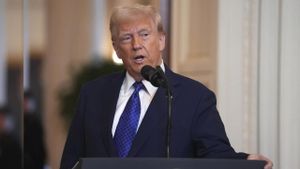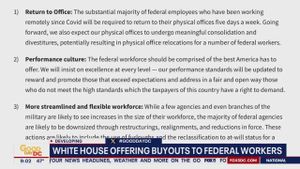The Federal Aviation Administration (FAA) is undergoing significant reforms following the catastrophic midair collision of an American Airlines regional jet and a U.S. Army Black Hawk helicopter, which resulted in the tragic loss of 67 lives over the Potomac River near Ronald Reagan Washington National Airport. This incident has sent shockwaves throughout the nation, prompting urgent questions about aviation safety protocols and staffing adequacy within the agency responsible for overseeing U.S. air travel.
The collision occurred on Wednesday night, igniting outrage and calls for accountability. President Donald Trump swiftly responded, criticizing the FAA's current practices and emphasizing the need for immediate changes. Speaking at a press briefing, Trump condemned the diversity, equity, and inclusion (DEI) hiring strategies implemented by previous administrations, which he claimed compromised safety by prioritizing diversity over qualifications. “You had a confluence of bad decisions,” he said, attributing the crash to systemic incompetence exacerbated by these policies.
According to various sources, the single air traffic controller monitoring both the helicopter and the jet at the time of the incident was severely overwhelmed, highlighting staffing shortages at the facility. “It’s an accident…that seems to be preventable,” said Daniel Driscoll, Trump's nominee for Army secretary, during his Senate confirmation hearing. The FAA currently faces considerable staff deficits, with estimates citing a shortfall of around 3,000 to 4,000 air traffic controllers—a situation exacerbated by extensive workloads and recent early retirement offers extended to air traffic controllers.
Trump attributed this staffing crisis to what he characterized as the previous administration's failure to prioritize merit-based hiring. He stated, “Brilliant people have to be in those positions,” reflecting his administration's new approach to fill key roles with highly skilled individuals. The Trump administration moved swiftly following the tragedy, ordering reviews of the FAA’s operational practices and banning the implementation of DEI policies which, according to critics, overstretched personnel and diluted competency levels.
Following the crash, Transportation Secretary Sean Duffy affirmed the government's commitment to retaining all safety-related positions, including air traffic controllers. “We’re going to keep all our safety positions in place, no early retirement,” he asserted. The Secretary's statements come amid concerns raised by airline representatives about operational impacts stemming from the FAA's staffing issues and financial cuts.
Critics of the previous hiring practices emphasized how the FAA’s focus on DEI led to underqualified personnel filling roles at the agency. Trump opined, “Those disabilities at the federal government as a matter of policy, as identified for special emphasis…all qualify for the position of [air traffic] controller.” He argued for the necessity of enforcing oversight to prevent politically motivated hiring from undermining safety systems.
Transportation Secretary Duffy echoed this sentiment, stating the aim of proactive hiring initiatives would revolutionize aviation safety practices. “Our air traffic controllers—they are stressed out, they are tapped out,” he stated, indicating the urgent need for additional hires to alleviate the pressure on existing staff.
While many have commended efforts to reassess the FAA’s structure, concerns linger about how political agendas may influence operational effectiveness moving forward. Critics, including current Transportation Secretary Pete Buttigieg, have denounced Trump’s claims as being devoid of evidential foundation, responding with their own commitment to safety and effectiveness during their tenure. “We put safety first, drove down close calls, grew air traffic control, and had zero commercial airline crash fatalities out of millions of flights on our watch,” Buttigieg asserted. His remarks position the contrasting views on air traffic management and its priority within federal infrastructure.
The response to Trump’s assessments has elicited varied reactions across the political spectrum. While some lauded the increased emphasis on skilled personnel over DEI initiatives as necessary for the FAA's rehabilitation, others viewed it as politicization of the accident rather than laying the groundwork for constructive reform. Trump’s communications reflect his administration's ambition to restore public confidence by rectifying perceived mismanagement within aviation authorities.
With the accident's ramifications still fresh and the nation grappling with the underlying causes of this disaster, the discussions around the FAA’s immediate future and policy direction remain pivotal. Though the crash will be etched as one of the worst aviation disasters, the hope lies within instituting viable reforms moving forward.
The Biden administration's response to these issues will likely set the stage for future aviation policy as they strive to balance safety priorities with necessary federal hiring reforms. Families of the victims demand accountability, and increasing public scrutiny may create pressure for both the current administration and the FAA to meet elevated safety expectations.
This tragic incident has reignited the national dialogue on air safety protocols and has shown the need for continuous supervision, ensuring both experienced hands and effective frameworks guide the skies above America.



